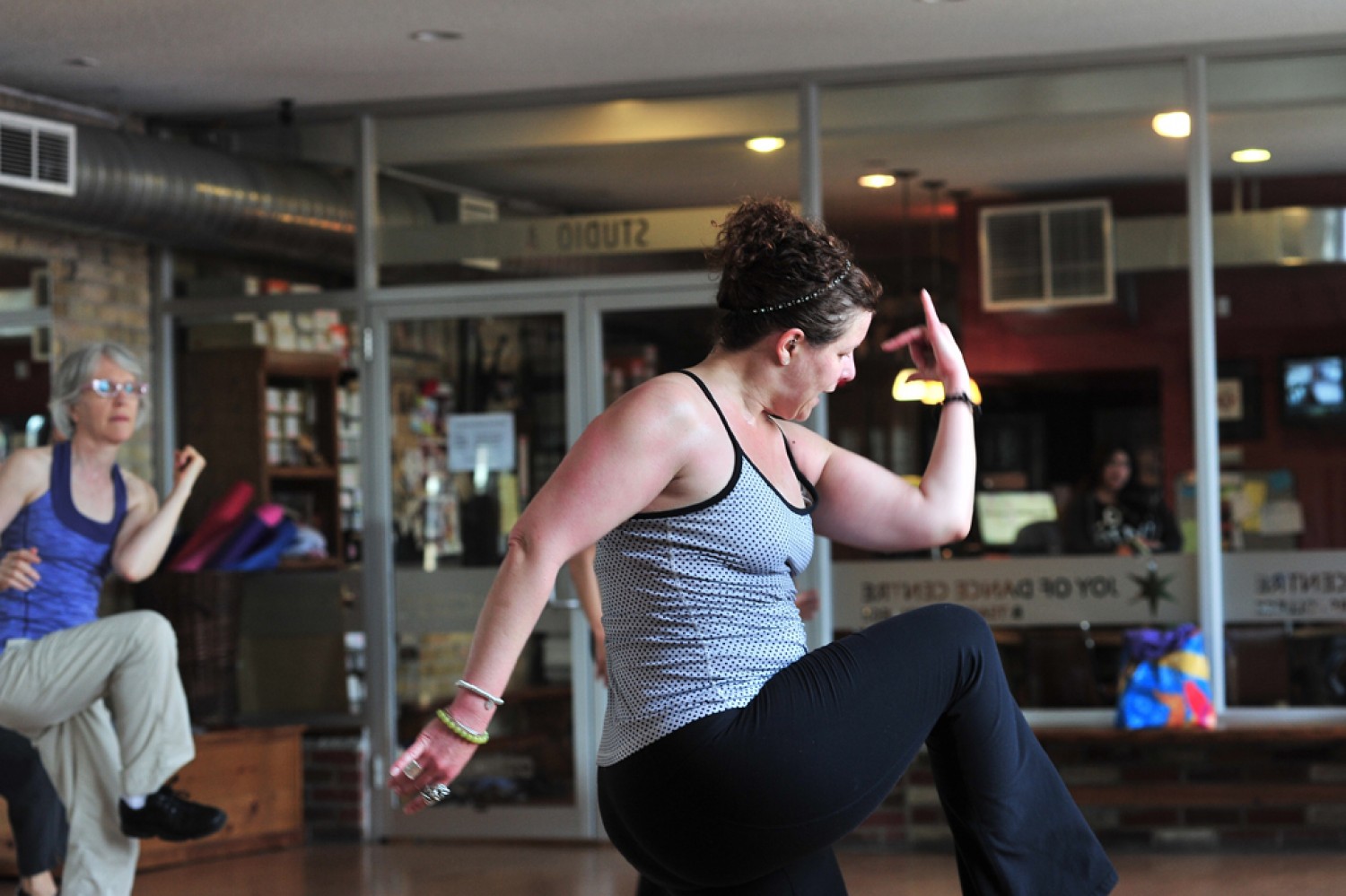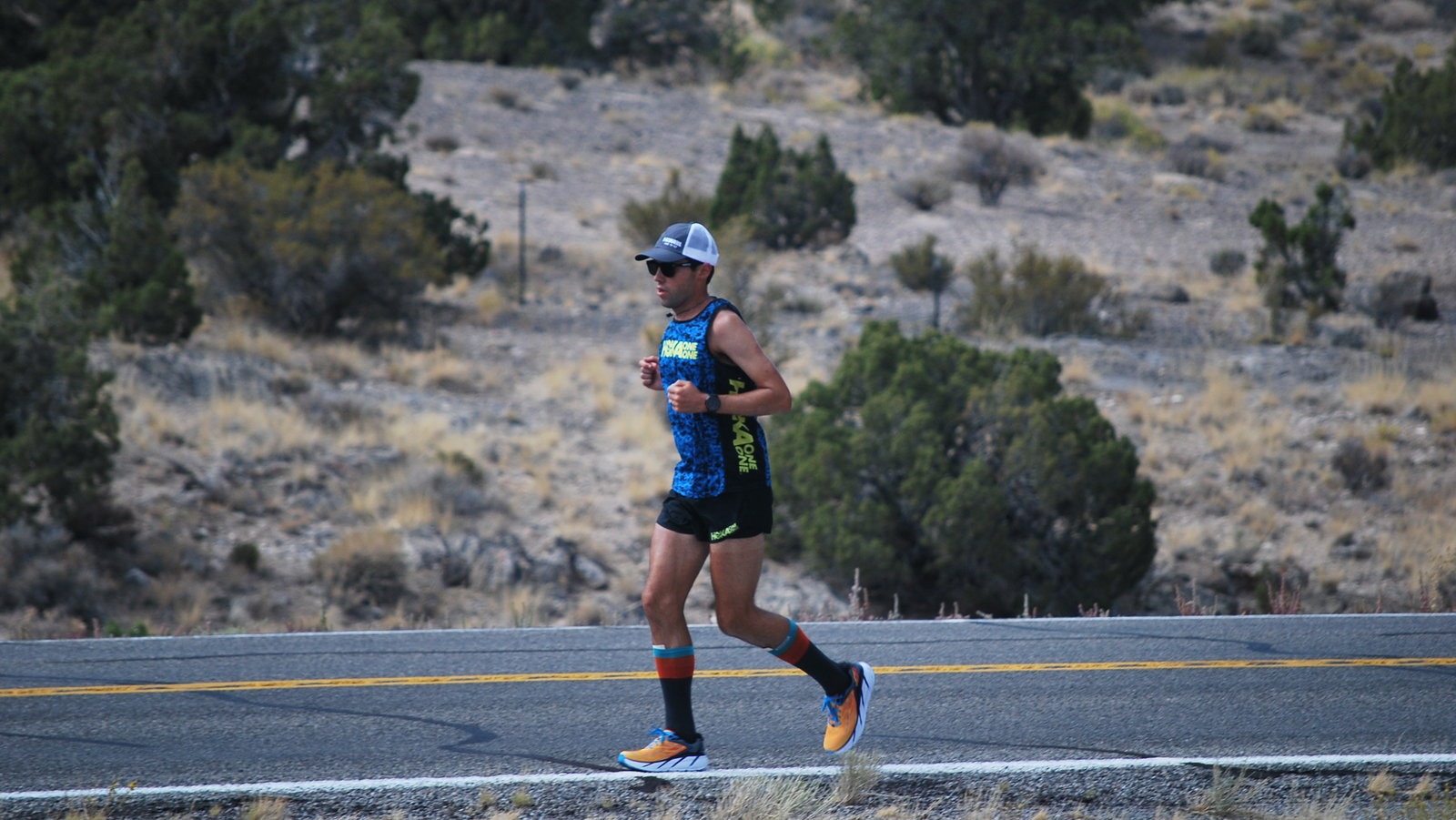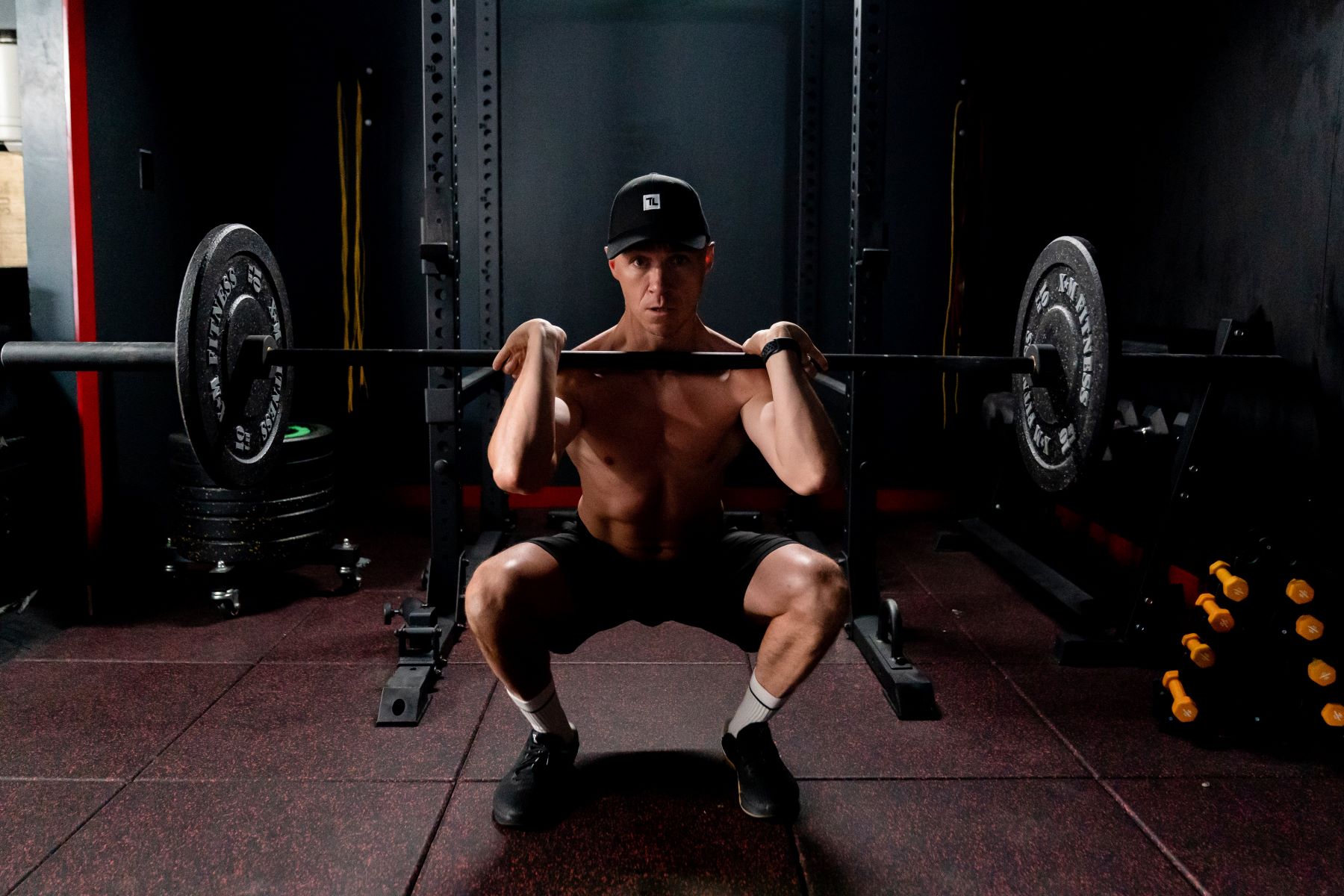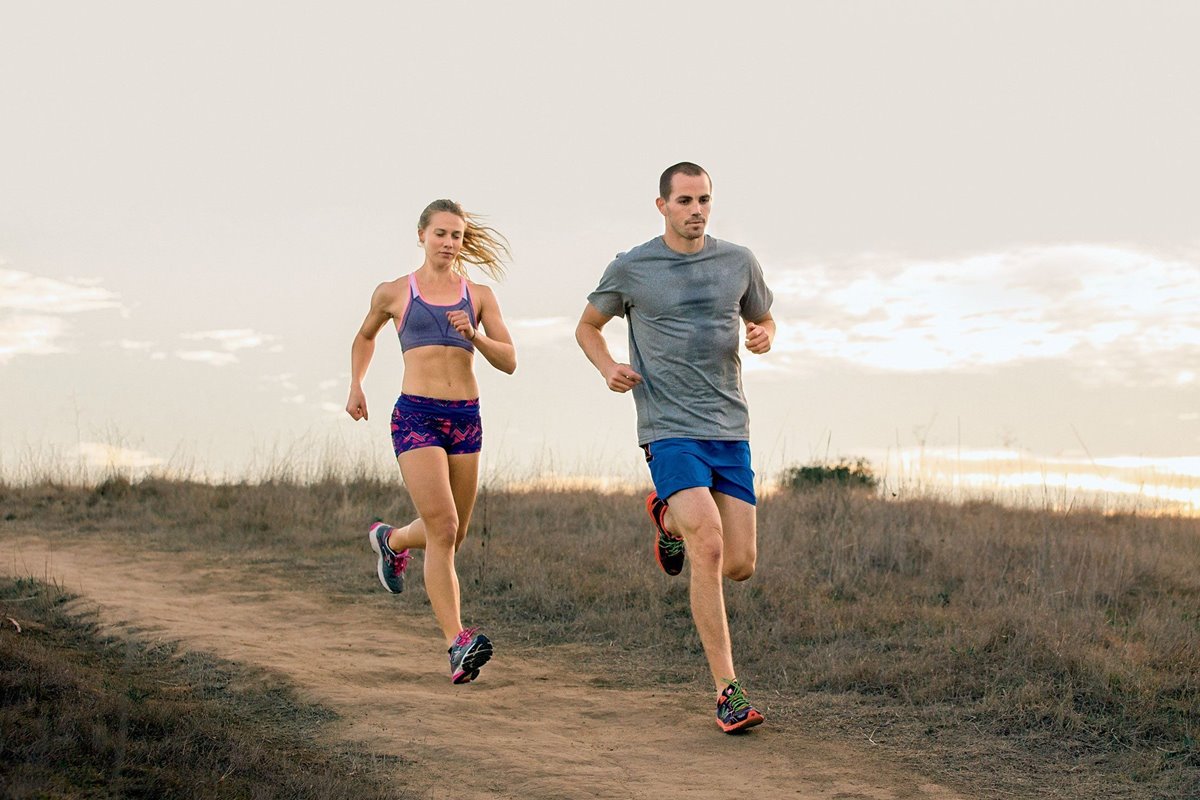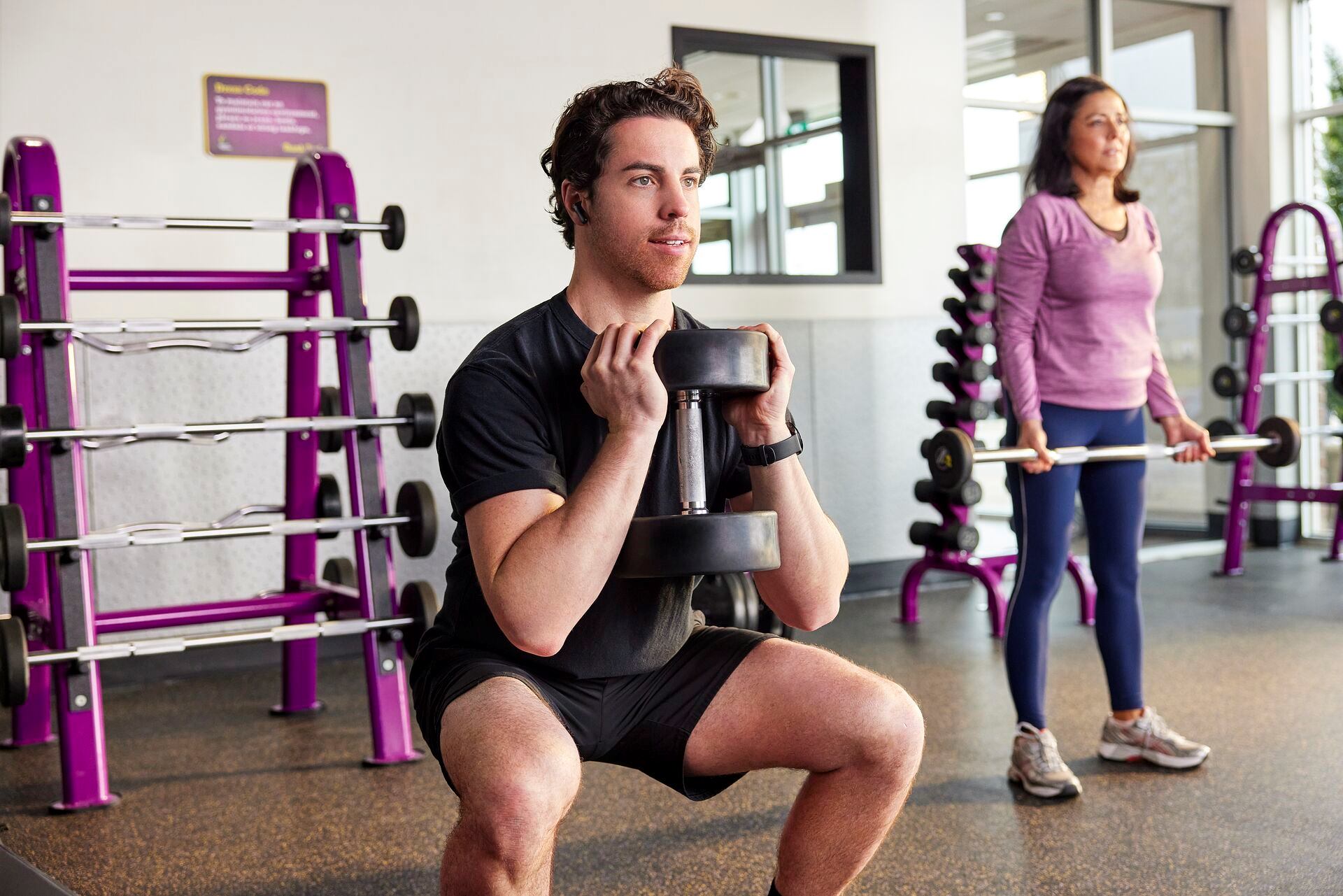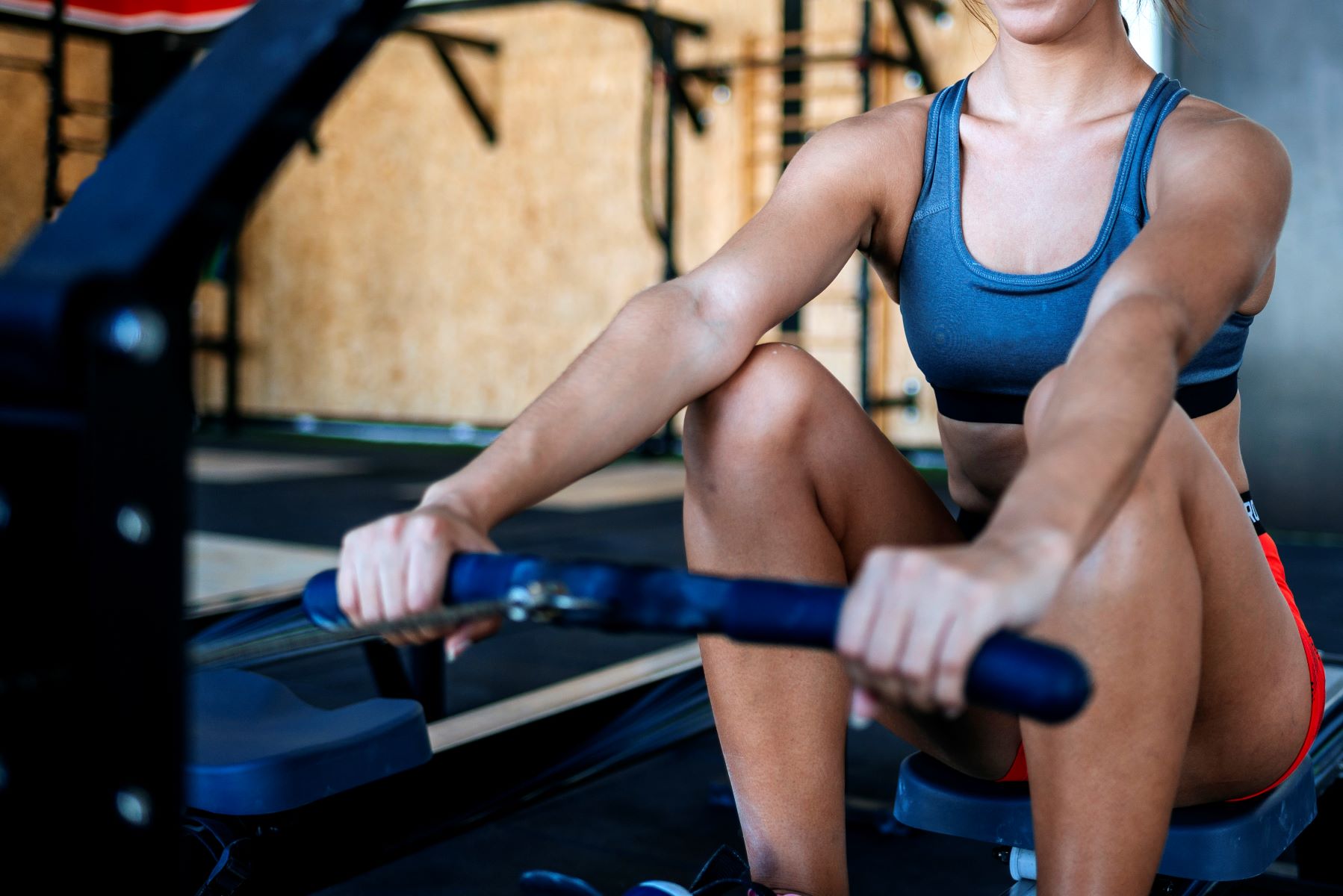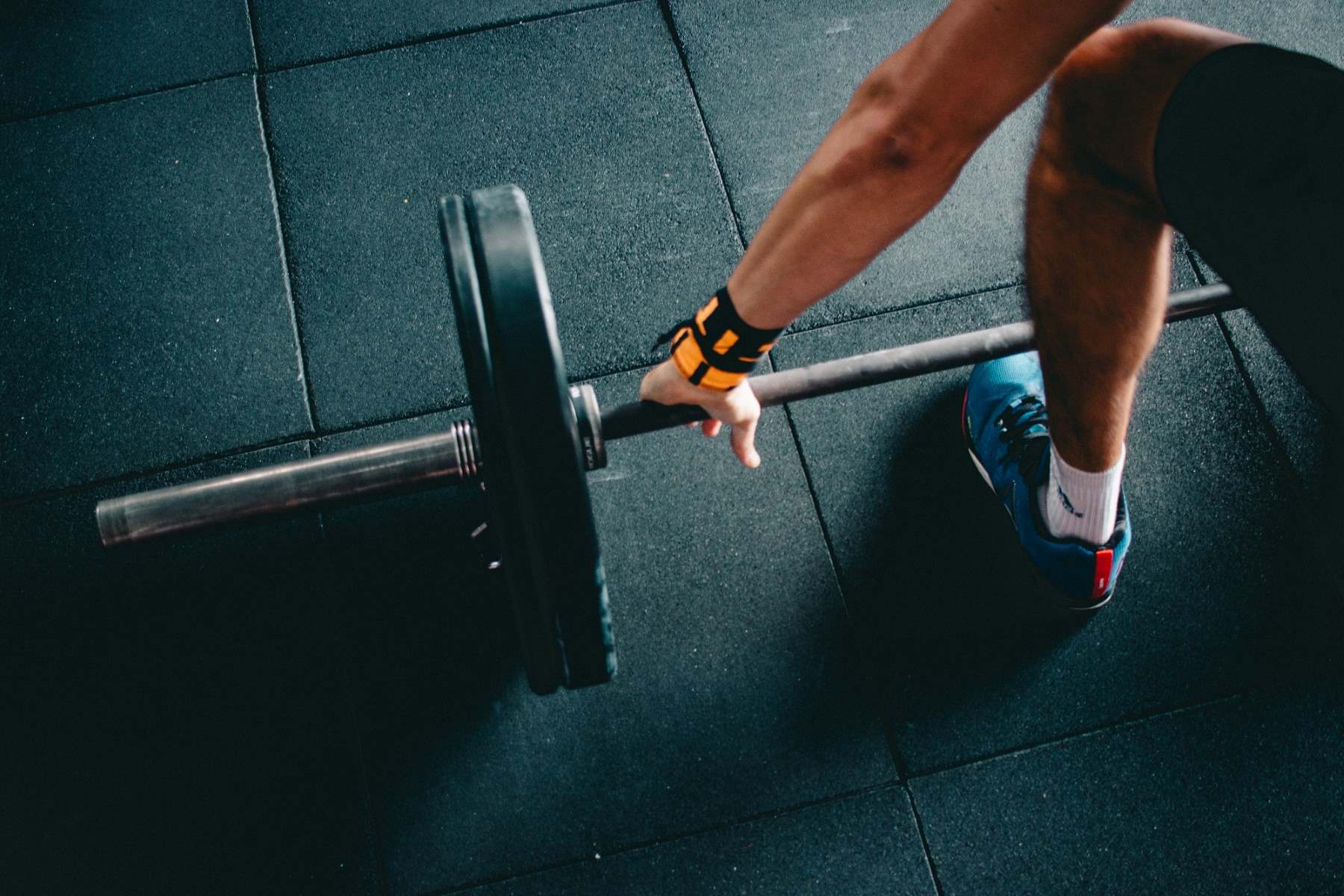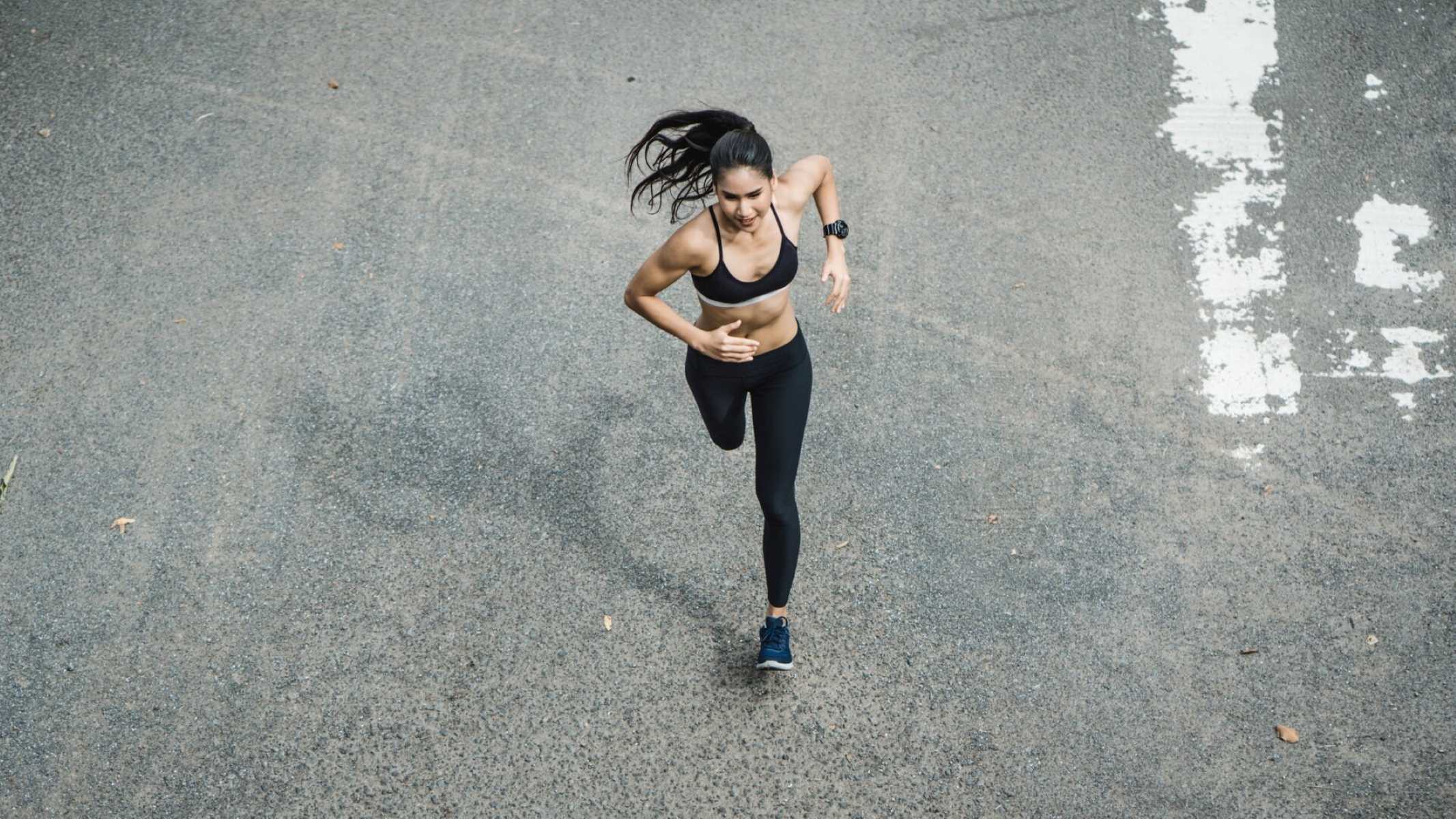Home>Misc>Featured>Core And Balance Exercises Are A Component Of Which Part Of An OPT Workout?


Featured
Core And Balance Exercises Are A Component Of Which Part Of An OPT Workout?
Modified: January 22, 2024
Core and balance exercises are a featured component in the OPT workout, enhancing strength and stability.
Introduction
When it comes to achieving optimal fitness and performance, a well-rounded workout routine is essential. One popular approach is the Optimum Performance Training (OPT) model, which focuses on training the body in a systematic and progressive manner. Within an OPT workout, there are various components that target different aspects of fitness, including strength, power, endurance, and flexibility.
In this article, we will delve into one specific aspect of an OPT workout: core and balance exercises. The core and balance exercises are an integral part of the workout as they not only help improve stability and coordination but also play a crucial role in injury prevention and overall athletic performance.
In the following sections, we will explore the importance of core and balance exercises, the specific exercises included in an OPT workout, and how you can incorporate them into your fitness routine.
Whether you are an athlete looking to enhance your performance or someone seeking improved functional fitness, understanding the role of core and balance exercises in an OPT workout can provide significant benefits for your overall fitness journey. So, let’s dive in and explore the world of core and balance exercises within the OPT model.
What is an OPT Workout?
The Optimum Performance Training (OPT) model is a comprehensive training system that is designed to help individuals achieve their fitness goals while minimizing the risk of injury. Developed by the National Academy of Sports Medicine (NASM), it is a science-based approach that focuses on individualizing workouts based on the client’s needs, goals, and current fitness level.
Unlike traditional training methods that solely focus on building strength or endurance, the OPT model takes a holistic approach by incorporating various components of fitness. These components include:
- Stabilization
- Strength
- Power
- Endurance
- Flexibility
The OPT model follows a progressive system, starting with stabilization training and gradually advancing to more challenging and dynamic exercises. Each component of the workout is carefully planned and tailored to target specific muscle groups and energy systems.
The foundation of an OPT workout lies in the stabilization phase, which focuses on improving core strength, muscular endurance, and overall body stability. This phase is crucial for establishing a solid foundation, optimizing joint stability, and enhancing neuromuscular efficiency, which is the ability of the brain to effectively communicate with the muscles.
Once a solid foundation has been established, the client progresses to the strength phase, where the focus shifts to increasing muscle size, strength, and power. This phase incorporates a combination of compound exercises, such as squats and deadlifts, to target multiple muscle groups simultaneously.
The power and endurance phases follow, which are designed to further enhance muscle power and improve cardiovascular fitness. These phases involve explosive movements, plyometrics, and high-intensity interval training (HIIT) to challenge the body and stimulate further adaptations.
The final component of an OPT workout is flexibility training, which is often overlooked but is critical for maintaining joint mobility and preventing muscle imbalances. Flexibility exercises, such as yoga or stretching routines, are included to improve overall flexibility and range of motion.
Overall, the OPT model provides a structured and systematic approach to fitness training, ensuring that all aspects of fitness are addressed in a progressive manner. By incorporating various components such as stabilization, strength, power, endurance, and flexibility, individuals can achieve optimal performance and reduce the risk of injury.
Understanding the Components of an OPT Workout
The Optimum Performance Training (OPT) model incorporates several key components to create a well-rounded and effective workout routine. Each component serves a specific purpose and contributes to the overall goal of improving individual fitness levels and performance.
1. Stabilization: The first phase of an OPT workout focuses on improving stability and balance. This is achieved through exercises that target the core muscles, including the abdominals, lower back, and hip muscles. Stabilization exercises help to enhance neuromuscular control and improve muscular endurance, laying the groundwork for progression in later phases.
2. Strength: The strength phase of an OPT workout is designed to increase muscle strength and size. This is achieved by incorporating resistance training exercises that target specific muscle groups. Compound exercises, such as squats, deadlifts, and bench presses, are commonly used to engage multiple muscle groups simultaneously, providing a more functional and efficient workout.
3. Power: Power training focuses on enhancing explosiveness and speed. This phase incorporates exercises that involve rapid, forceful movements, such as plyometrics and Olympic lifts. Power training helps to improve muscular power and quickness, which is beneficial for athletes participating in sports that require fast and explosive movements.
4. Endurance: The endurance phase aims to improve cardiovascular fitness and muscular endurance. High-intensity interval training (HIIT) and circuit training are often used during this phase to challenge the cardiovascular system and improve stamina. Endurance training helps individuals sustain prolonged physical activity and perform at a higher intensity for extended periods.
5. Flexibility: Flexibility training is an essential component of an OPT workout as it helps improve joint mobility and prevent muscle imbalances. This phase incorporates various stretching exercises and techniques, such as static stretching and dynamic stretching, to increase flexibility and range of motion. Flexibility exercises also aid in recovery and reduce the risk of injury.
By understanding and incorporating these components into an OPT workout, individuals can address all aspects of fitness, including stability, strength, power, endurance, and flexibility. Each phase builds upon the previous one, allowing for a progressive and well-balanced training program that caters to individual goals and needs.
The Importance of Core and Balance Exercises
Core and balance exercises are integral components of an Optimum Performance Training (OPT) workout. They play a crucial role in improving overall stability, coordination, and athletic performance. While often overlooked, these exercises provide numerous benefits that extend beyond just a strong core.
1. Improved Core Strength: Core exercises target the muscles in your abdomen, lower back, and hips, collectively known as the core muscles. These muscles act as a stabilizing force, providing support and strength to the entire body. By strengthening the core, you can improve posture, reduce the risk of back pain, and enhance overall functional fitness.
2. Enhanced Stability and Balance: Balance exercises focus on improving proprioception, which is your body’s sense of its position and movement in space. By challenging your balance, you activate the smaller, stabilizing muscles in your body, helping to improve overall stability. This is particularly important for athletes who need to maintain control and stability during dynamic movements.
3. Injury Prevention: A strong core and good balance can significantly reduce the risk of injuries. Core exercises help to stabilize the spine, reducing the risk of back injuries. Balance exercises enhance proprioception and body control, minimizing the chances of falls and twists. By including core and balance exercises in your OPT workout, you can improve your body’s ability to withstand external forces and reduce the likelihood of injuries during physical activities.
4. Increased Performance: Core and balance exercises can greatly impact overall athletic performance. A strong core allows for better transfer of power between the upper and lower body, improving strength and coordination. Enhanced balance not only prevents falls but also enables athletes to maintain stability during quick and agile movements. By incorporating these exercises into your OPT workout, you can enhance your performance in various sports and activities.
5. Functional Fitness: Core and balance exercises mimic everyday movements, making them highly beneficial for functional fitness. Improved core strength and stability allow for better posture, balance, and strength in day-to-day activities such as lifting objects, bending, and twisting. By training these foundational aspects of fitness, you can improve your overall quality of life and perform daily tasks more efficiently.
Incorporating core and balance exercises into your OPT workout is essential for achieving holistic fitness and optimal performance. The benefits extend beyond just a strong core and improved balance; they include injury prevention, enhanced performance, and improved functional fitness. So, make sure to include these exercises in your training routine to reap the maximum benefits they offer.
Core Exercises in an OPT Workout
The core is the center of the body and plays a vital role in stabilizing and supporting movements in both athletic and everyday activities. In an Optimum Performance Training (OPT) workout, core exercises are included to strengthen and engage the muscles of the abdomen, lower back, and hips. These exercises improve overall core strength, stability, and enhance functional fitness.
Here are some core exercises commonly incorporated into an OPT workout:
- Plank: The plank is a fundamental exercise that targets the entire core, including the rectus abdominis, transverse abdominis, and obliques. It involves maintaining a straight body position while resting on the forearms and toes. Variations such as side planks and plank with leg lifts can also be added to challenge the core muscles further.
- Russian Twist: The Russian twist is an exercise that targets the obliques. It involves sitting on the floor with the knees bent, lifting the feet off the ground, and twisting the torso from side to side while holding a weight or medicine ball. This exercise helps improve rotational strength and core stability.
- Deadbug: The deadbug exercise targets the deep core muscles, including the transverse abdominis. It involves lying on the back with arms extended upwards and legs bent at a 90-degree angle. The exercise consists of extending one arm and the opposite leg simultaneously while keeping the core engaged. It helps improve core stability and coordination.
- Bird Dog: The bird dog exercise is another effective core exercise that targets the deep core muscles, along with the glutes and back muscles. It involves starting on all fours and extending one arm forward while simultaneously extending the opposite leg backward. This exercise improves core strength, balance, and overall stability.
- Mountain Climbers: Mountain climbers are a dynamic core exercise that also provides a cardiovascular component. Starting in a push-up position, the knees are alternately brought towards the chest in a running motion. This exercise engages the core muscles and improves endurance.
When performing core exercises in an OPT workout, it is crucial to focus on maintaining proper form and engaging the core muscles throughout the movement. Gradually increasing the difficulty and intensity of the exercises over time will help progress and continually challenge the core muscles.
By incorporating these core exercises into your OPT workout, you can strengthen the core muscles, improve stability, enhance athletic performance, and reduce the risk of injuries. Remember to consult with a fitness professional to ensure proper execution and to tailor the exercises to your specific needs and fitness level.
Balance Exercises in an OPT Workout
Balance exercises play a crucial role in an Optimum Performance Training (OPT) workout as they improve stability, coordination, and body control. These exercises challenge your ability to maintain equilibrium, engage small stabilizing muscles, and enhance overall athletic performance. Incorporating balance exercises into your OPT routine can benefit athletes, fitness enthusiasts, and individuals looking to improve their functional fitness.
Here are some balance exercises commonly included in an OPT workout:
- Single Leg Balance: The single leg balance exercise involves standing on one leg while maintaining stability and control. This exercise targets the muscles in the leg, ankle, and foot, as well as the core muscles responsible for maintaining balance. Increasing the difficulty by closing your eyes or performing the exercise on an unstable surface further challenges your balance.
- Bosu Ball Exercises: The Bosu ball is a versatile piece of equipment that can be used for various balance exercises. Exercises like the Bosu ball squat, Bosu ball lunge, and Bosu ball plank engage the core, leg muscles, and stabilizers while improving balance and coordination.
- Single Leg Deadlift: The single leg deadlift is a compound exercise that combines balance, strength, and flexibility. It involves balancing on one leg while hinging forward at the hips, reaching towards the ground with the opposite hand. This exercise targets the glutes, hamstrings, and core while challenging your balance and stability.
- Balance Board Exercises: Balance boards are excellent tools for balance training. Exercises such as standing on a balance board, performing squats or lunges on the board, or doing push-ups with hands on the board help improve overall balance, stability, and coordination.
- Lateral Hops: Lateral hops involve jumping sideways from one foot to the other, maintaining balance and control throughout. This exercise targets the leg muscles and improves lateral stability, which is beneficial for sports that involve lateral movements, such as basketball or tennis.
- Yoga and Tai Chi Poses: Practicing yoga or Tai Chi poses can greatly enhance balance, flexibility, and body awareness. Poses like the tree pose, warrior III pose, or the single-leg standing pose challenge balance while improving muscular strength and coordination.
When performing balance exercises in an OPT workout, it is important to start with exercises that match your current fitness level and gradually progress to more challenging variations. Additionally, maintaining proper form, focusing on your breath, and being mindful of your body’s alignment will help you get the most out of each exercise.
By incorporating balance exercises into your OPT workout, you can enhance your overall stability, coordination, and body control. These exercises improve athletic performance, reduce the risk of falls and injuries, and enhance functional fitness for everyday activities. As always, consult with a fitness professional to ensure proper technique and to customize the exercises to your specific needs and abilities.
Incorporating Core and Balance Exercises in your OPT Workout
Integrating core and balance exercises into your Optimum Performance Training (OPT) workout can significantly enhance your overall fitness and performance. These exercises target essential aspects of stability, coordination, and core strength, providing a solid foundation for various athletic and functional activities. Here are some tips on how to effectively incorporate core and balance exercises into your OPT routine:
- Warm-up with Dynamic Movements: Begin your workout with dynamic movements that engage the core and challenge your balance. Exercises like high knees, walking lunges with a twist, or lateral lunges can activate the core muscles and prepare your body for the upcoming workout.
- Add Core Exercises in Every Phase: Incorporate specific core exercises in each phase of your OPT workout. During the stabilization phase, focus on exercises that improve core endurance, such as planks or bird dogs. As you progress to the strength and power phases, include exercises like Russian twists or medicine ball slams to increase core strength and power. Even in the endurance and flexibility phases, you can add core-engaging exercises, such as mountain climbers or standing stability ball twists.
- Include Balance Challenges: Integrate balance exercises throughout your workout to improve stability and coordination. Instead of resting between sets, perform exercises that challenge your balance, such as single-leg balances or standing on a balance board. Alternatively, you can incorporate balance elements into strength exercises, such as doing bicep curls or shoulder presses while standing on one leg.
- Focus on Proper Form and Technique: When performing core and balance exercises, prioritize maintaining proper form and technique. This ensures that you are effectively targeting the intended muscles and minimizing the risk of injury. Engage the core muscles, maintain good posture, and pay attention to your body alignment throughout the exercises.
- Progress Gradually: Start with basic core and balance exercises and gradually increase the difficulty level. For example, you can begin with a regular plank and progress to a plank with leg lifts or add instability by performing balance exercises on an uneven surface. By gradually progressing, you challenge your body and allow for continuous improvement.
- Take Advantage of Variation: There are countless core and balance exercises to choose from, so don’t be afraid to vary your workouts. Incorporate a mix of static and dynamic exercises, use different equipment or props, and experiment with different movements and variations to keep your workouts interesting and engaging.
Remember that incorporating core and balance exercises into your OPT workout is not only beneficial for athletes but also for individuals looking to improve their overall fitness and functional abilities. However, it is essential to tailor your workout to your fitness level and goals. Consult with a fitness professional to create a customized OPT routine that suits your specific needs and abilities.
Benefits of Core and Balance Exercises in an OPT Workout
Including core and balance exercises in your Optimum Performance Training (OPT) workout offers numerous benefits that extend beyond just a strong core and improved balance. These exercises play a fundamental role in enhancing your overall fitness, performance, and functional abilities. Here are some of the key benefits of incorporating core and balance exercises into your OPT routine:
- Improved Core Strength: Core exercises specifically target and strengthen the muscles of the abdomen, lower back, and hips. By consistently engaging these muscles, you can experience improvements in core strength, stability, and posture. A strong core contributes to better overall body control, reducing the risk of injuries and enhancing athletic performance.
- Enhanced Stability and Balance: Balance exercises challenge your proprioception, which is your body’s sense of its position and movement in space. By regularly incorporating balance exercises into your workout, you can improve your stability, coordination, and body awareness. This translates to better performance in sports that require agility, quickness, and precise movements.
- Injury Prevention: Core and balance exercises help strengthen the muscles that provide stability to your spine, pelvis, and joints. By improving your core strength, you can stabilize your spine, reducing the risk of lower back pain and injuries. Additionally, better balance and stability can prevent falls, twisting injuries, and other accidents associated with poor body control.
- Enhanced Athletic Performance: Core and balance exercises are essential for athletes in various sports and activities. A strong core allows for optimal transfer of power between the upper and lower body, aiding in explosive movements, agility, and overall athletic performance. Improved balance enables athletes to maintain stability and control during dynamic movements, giving them a competitive edge.
- Better Functional Fitness: Core and balance exercises closely mimic real-life movements and activities. By incorporating these exercises into your OPT routine, you can improve your functional fitness, making everyday tasks easier and more efficient. Whether it’s bending, lifting, or reaching, having a strong core and good balance improves your overall body mechanics and reduces the risk of injury.
- Increased Metabolic Efficiency: Core and balance exercises engage multiple muscle groups simultaneously, leading to an increase in metabolic demand. Incorporating these exercises into your workout can help improve your metabolic rate and increase calorie burning both during and after your workout. This can contribute to overall weight management and improve body composition.
- Enhanced Mind-Body Connection: Core and balance exercises require a high level of concentration, focus, and body awareness. By regularly performing these exercises, you can improve your mind-body connection, allowing you to better understand and control your movements. This can help in other areas of life that require focus and body control.
By incorporating core and balance exercises into your OPT workout, you can experience a wide range of benefits, from improved core strength and stability to enhanced athletic performance and functional fitness. These exercises provide a solid foundation for overall body strength and control, helping you reach your fitness goals and perform at your best.
Conclusion
Incorporating core and balance exercises into your Optimum Performance Training (OPT) workout is crucial for improving overall fitness, performance, and functional abilities. These exercises target the muscles of the core, enhance stability and balance, and provide a solid foundation for various athletic and everyday activities.
Core exercises such as planks, Russian twists, and deadbugs strengthen the muscles of the abdomen, lower back, and hips, resulting in improved core strength, stability, and posture. Balance exercises challenge your body’s proprioception, leading to enhanced stability, coordination, and body control.
The benefits of including core and balance exercises in your OPT workout are vast. They include improved core strength, enhanced stability and balance, injury prevention, enhanced athletic performance, better functional fitness, increased metabolic efficiency, and an enhanced mind-body connection.
By consistently incorporating core and balance exercises into your routine, you can achieve a well-rounded level of fitness, reduce the risk of injuries, and perform at your best in both athletic endeavors and everyday tasks. Remember to start with exercises that match your fitness level and gradually progress as you become stronger and more proficient.
When planning your OPT workout, consult with a fitness professional to ensure proper execution and to tailor the exercises to your specific needs and goals. By focusing on core and balance exercises, you can optimize your fitness journey and experience the numerous benefits they offer.
